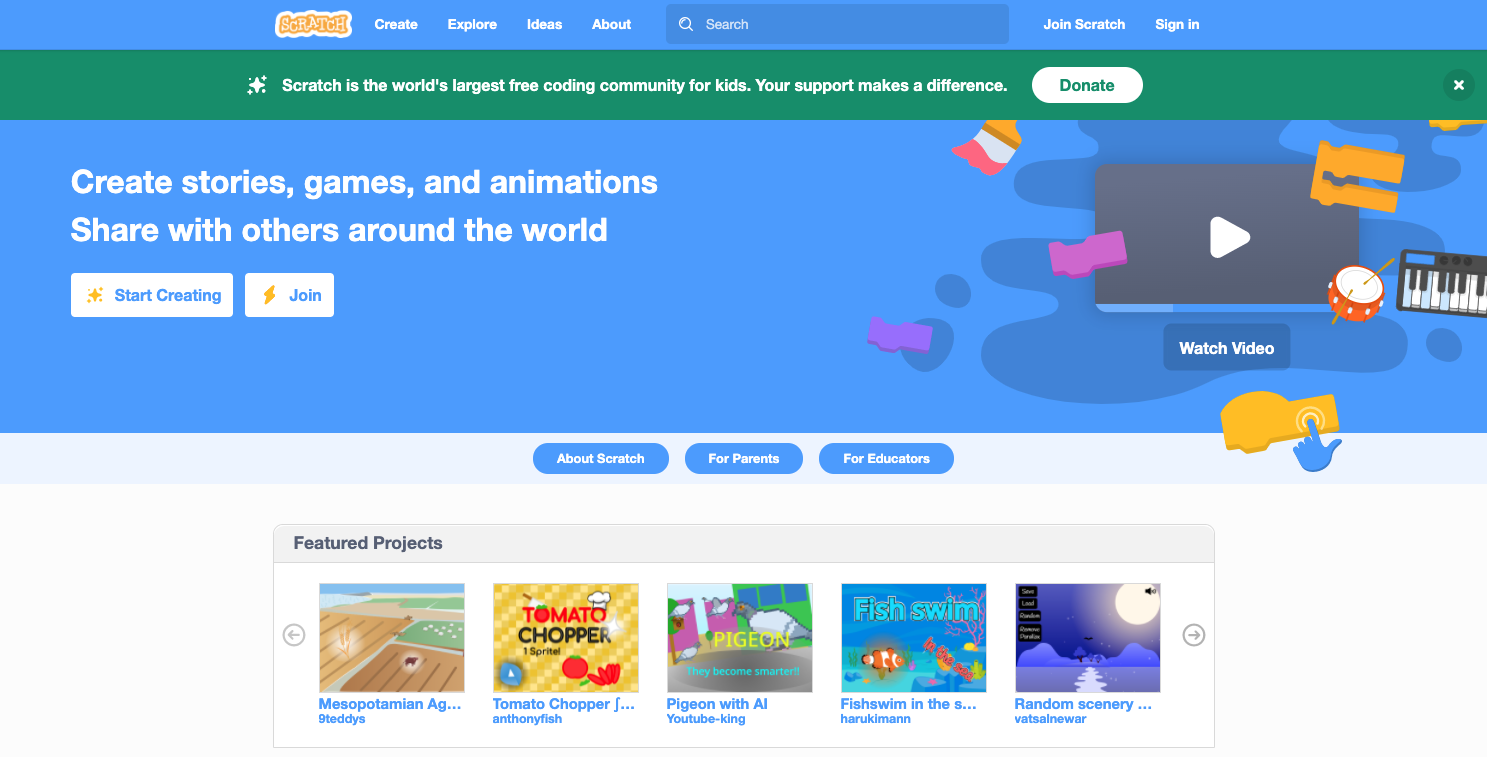One Sunday morning, 8th year student Helen Saunders woke up and checked her Scratch account and discovered she had 1000+ messages waiting for her. She “was a little confused,” but when she looked at the homepage, she saw that her project was featured on the home page. Since then, her project on Mesopotamian agriculture has garnered 1524 likes, 1077 stars, and over 57k views.
Helen’s Mesopotamia project featured on the Scratch home page
What is Scratch? It’s an educational coding community aimed at kids aged 8-16, that uses a block-based programming language. The simple, visual interface allows young people to create digital stories, games, and animations. Originally developed at the MIT Media Lab, it’s now run by the nonprofit Scratch Foundation. Programming in Scratch involves moving blocks of code and attaching them to each other like jigsaw pieces. The programmers can use these jigsaw pieces to animate characters called “sprites.”
So why was Helen using Scratch? She chose to use Scratch for her Lesson on Ancient Mesopotamian Farming because she is “really interested in coding and programming.” In addition, she “had prior experience with the Scratch ‘syntax,’ and had a vision about how I would do it.” She was really happy to be able to use one of her favorite mediums—programming—to present her Earth and Human Studies (EHS) project, “because it felt less tedious and more like a fun off-time project.”
Each trimester, the Hollis Montessori School Adolescent Program (AP) chooses a central theme to explore in depth. This theme is considered through a wide variety of lenses: scientifically, historically, sociologically, culturally, and from a moral/philosophical point of view. The course covers subjects that in a more traditional middle school might be separated into social studies, science, health, and other classes. Students do both group and individual projects to reflect what they’ve learned, and present their work at a “Presentation Night” held at the end of every trimester, three times a year. This past fall, the theme was Mesopotamia.
Helen Saunders in the AP’s portable chicken coop
After working on the AP’s garden project last spring, Helen “became more interested in worldwide agriculture methods.” So she decided to study Mesopotamian agriculture “to link to what I had done the previous year with the garden boxes.” Her project took the form of a Scratch map of a Mesopotamian landscape. Each element of the map, from the sheep, oxen, and wheat/barley fields, to the bridges over irrigation canals and the mighty Euphrates river gives you more information when it is clicked on. Some of the enthusiastic comments her project received include thanks from other students for helping them study.
So what does it mean to be a “featured” project? It means your project is shown at the top of the Scratch home page. The folks at Scratch are looking for projects to feature that show an innovative use of Scratch, promote collaboration, show diversity, or inspire. To be chosen, a project has to be nominated by someone other than its creator, “and there are several other prerequisites,” says Helen, “like being on Scratch for long enough, having a certain number of views and projects, etc. I still do not know who recommended my project to be featured.”
“One reason I really like Scratch,” says Helen, “is that you don't have to debug syntax errors or variable relocation mistakes or have to deal with classes, you can just code intuitively. In general, Scratch is really great for all types of coders, and as I now know, it is an alternative way to present projects.”
To see Helen’s project, go to: https://scratch.mit.edu/projects/579706226/



